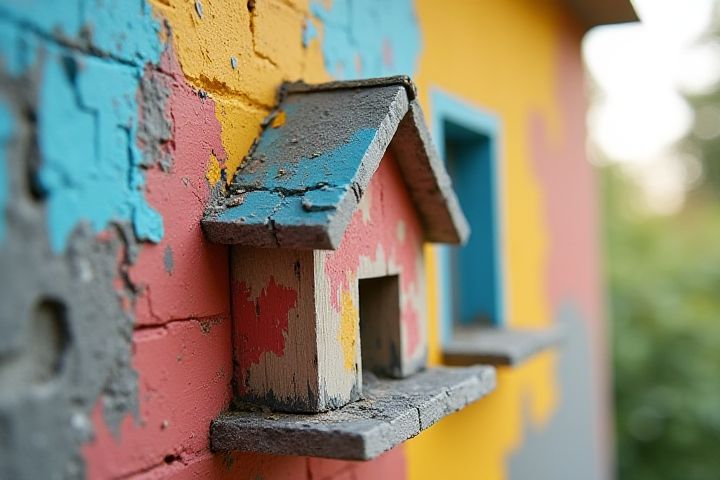
Painting a house yourself can be a fulfilling endeavor that saves money and allows you to add a personal touch to your home. Before you start, assess your skill level, as painting requires a steady hand and attention to detail. Consider the cost of high-quality paint, brushes, and other materials, which can add up quickly, impacting your budget. Prepare your surfaces diligently by cleaning and priming, ensuring that the paint adheres well and lasts longer. If you choose to pursue this project, proper techniques such as cutting in edges before rolling can greatly enhance the final results.
Should You Paint A House Yourself
Skill Level Required
Painting a house yourself requires a certain level of skill, particularly if you want a professional-looking finish. Basic skills include surface preparation, which might involve sanding and priming, and knowing how to operate brushes and rollers effectively. If you have prior experience in home improvement or DIY projects, your confidence and ability to tackle this task will increase; however, novices may find themselves frustrated with uneven coats or paint drips. Remember, high-quality tools and materials can enhance your results, so investing in the right supplies can significantly impact your final outcome.
Cost Savings Potential
Painting your house yourself can save you a significant amount of money, with professional labor costs averaging between $300 and $800 for a typical room. DIY enthusiasts can complete this work for a fraction of that expense, often spending only on paint and supplies, which can be as low as $50 to $100 per gallon. By taking on this task yourself, you can maximize your budget while transforming your living space. Just remember to factor in your time and effort, which might be more valuable than the savings you expect.
Time Commitment
Painting a house yourself typically requires a substantial time commitment, often ranging from several days to weeks, depending on the size of the home and the complexity of the job. Preparing the surfaces, such as cleaning, sanding, and priming, may take up to 30% of your total painting time. Once you start painting, expect to dedicate around 2 to 4 hours per day for multiple days to achieve a quality finish. Assess your schedule and personal energy levels before starting, as the project can significantly impact your routine and availability.
Quality of Finish
When painting a house yourself, the quality of finish is paramount to achieving professional-looking results. Invest in high-quality paint, which typically ranges from $30 to $70 per gallon, ensuring long-lasting durability and better coverage. Proper surface preparation, including cleaning and priming, can significantly enhance the paint's adherence and appearance, reducing the need for touch-ups. By dedicating time to meticulous application techniques, such as using high-quality brushes or rollers, you can achieve a smooth, even coat that elevates your home's aesthetic appeal.
Equipment and Materials Needed
Before painting your house, gather essential equipment and materials to ensure a smooth process. You'll need high-quality paintbrushes--usually a 2.5-inch angled brush and a roller with a 3/4-inch nap--for applying paint on various surfaces. Don't forget to invest in painter's tape to create clean edges and a drop cloth to protect your flooring and furniture; a 9x12-foot cloth is a common choice. Finally, consider using a paint sprayer to save time on large areas, as it can cover about 400 square feet per gallon, making your project more efficient.
Safety Precautions
When painting your house, prioritize safety precautions to ensure a secure work environment. Always wear personal protective equipment (PPE) such as gloves, goggles, and a mask to prevent exposure to harmful chemicals and respiratory irritants in paint fumes. If using ladders, ensure they are stable and positioned on level ground, as falls account for approximately 20% of construction-related injuries. Remember, adequate ventilation is crucial; keep windows open and use fans to reduce inhalation risks from volatile organic compounds (VOCs) present in many paints.
Surface Preparation
Surface preparation is crucial when painting a house, as it accounts for approximately 70% of the overall success of the job. Thorough cleaning, sanding, and priming can significantly enhance paint adhesion and longevity. You should inspect for cracks, peeling paint, and moisture issues before applying any paint, as these factors can compromise the final finish. Investing time in proper surface preparation not only ensures a professional-looking result but can also save you money in frequent repainting.
Weather Conditions
Before you paint your house, check the weather forecast for optimal conditions. Ideal temperatures range between 50degF and 85degF to ensure proper drying and adhesion. Avoid painting if rain is expected within 24 hours, as moisture can compromise the paint's integrity. Windy conditions can also impede your ability to achieve a smooth finish, so choose a calm day for the best results.
Environmental Considerations
When painting your house, consider using eco-friendly paints that contain low levels of volatile organic compounds (VOCs), typically less than 50 grams per liter. These paints minimize harmful emissions, improving indoor air quality and reducing environmental impact. Opting for sustainable materials, such as natural brushes and rollers, can further decrease waste and promote a greener approach to home improvement. You also contribute to environmental conservation by responsibly disposing of leftover paint through local recycling programs.
Legal Regulations and Permits
Before embarking on a DIY house painting project, it's crucial to familiarize yourself with local legal regulations and permits. Many municipalities require a homeowner to obtain a permit if the project size exceeds specific thresholds, often around 200 square feet for exterior work. You may also need to comply with safety regulations regarding lead-based paints, especially in homes built before 1978. Ignoring these requirements could lead to significant fines or legal repercussions, so ensure that your project aligns with the local building codes and environmental guidelines.
